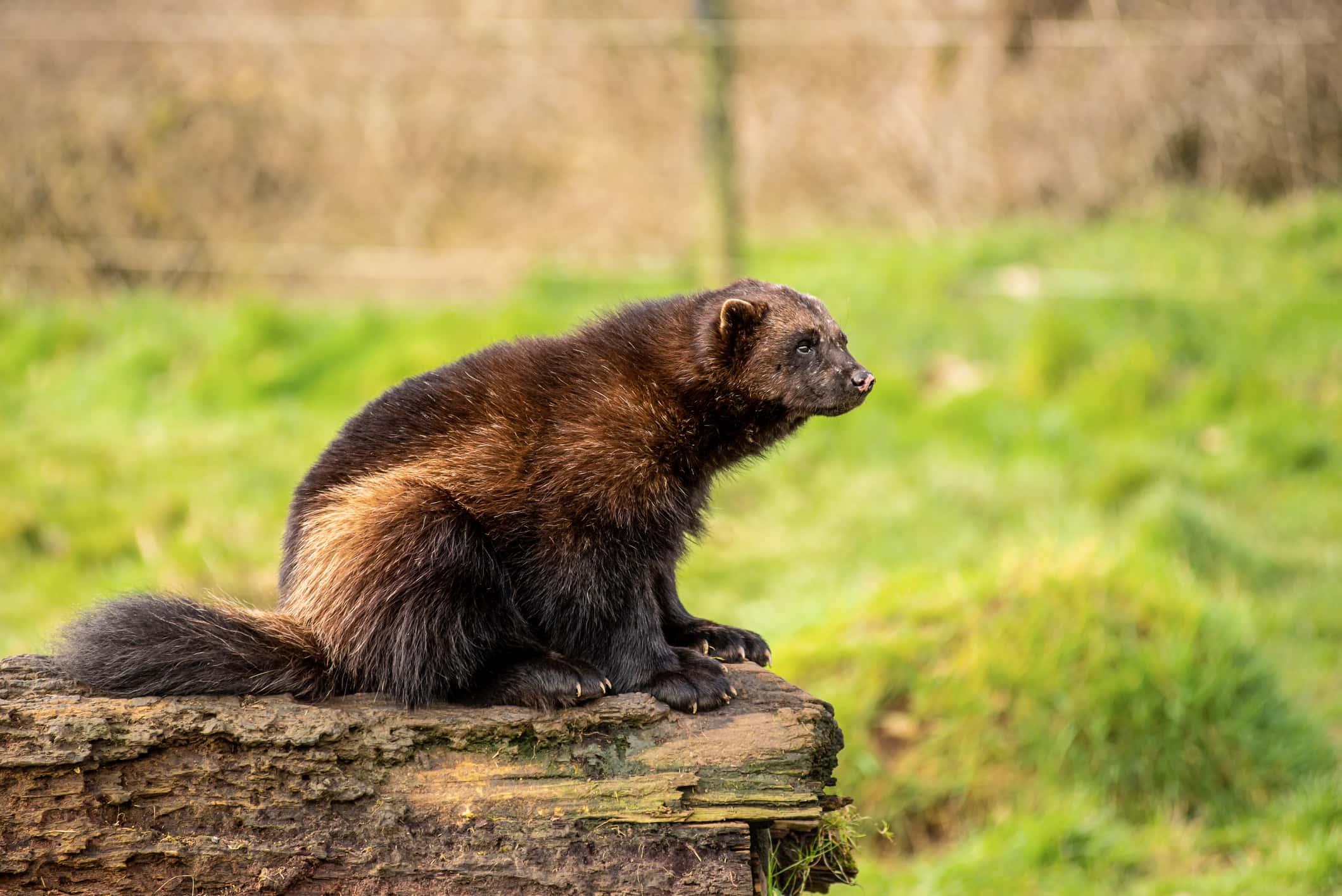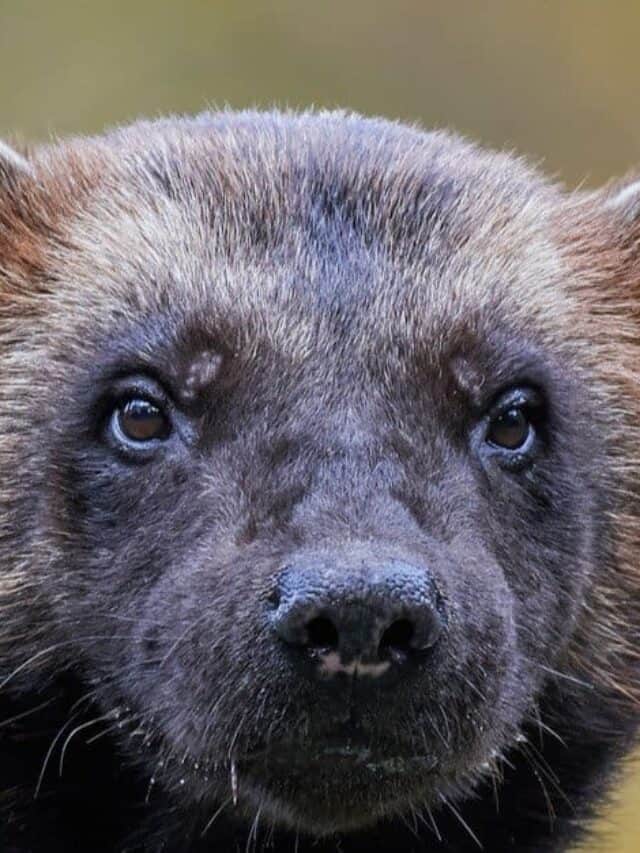Quick Answer:
- Theory 1–The moniker “Wolverine State” originated from the trading of wolverine pelts in Sault St. Marie, an important fur trading hub for Native Americans and European trappers during the 18th and 19th centuries.
- Theory 2–It is believed that in the 1700s the French settlers there were referred to as “wolverines” due to their hearty appetites and tenacious nature.
- Theory 3–During an 1803 border conflict between Michigan and Ohio, residents of Michigan were given the nickname “Wolverines.”
Michigan is a state that is known for many things, including its stunning natural beauty and rich history. However, perhaps one of the most interesting aspects of this northern state is its nickname — the Wolverine State. For those who have never visited Michigan or are unfamiliar with its history, it may seem strange to associate this animal with the Great Lakes region. After all, wolverines are typically thought of as inhabiting colder climates like Alaska or Canada. But there are several interesting theories that we will explore together.
What is a Wolverine?

Wolverines are threatened species, with less than 300 alive in the lower 48 states.
©Ondrej Prosicky/Shutterstock.com
The wolverine is a medium-sized carnivorous mammal that belongs to the family of weasels. It has a stocky and muscular body, short legs, and rounded ears. The fur of the wolverine varies in color from dark brown to blackish-brown, with a distinctive stripe running down its back. Wolverines have long claws that help them climb trees and dig through snow to find food.
Wolverines inhabit remote areas such as mountainous regions, boreal forests, and tundra zones across North America, Europe, Asia, and Scandinavia. They prefer living in cold climates where there are deep snowpacks for hunting prey like small mammals (such as squirrels), birds, carrion (dead animals), fish, or even insects.
Due to their elusive nature and preference for remote habitats far from human activity, it can be difficult to spot a wild wolverine in action. However, they are known for their ferocity when defending their territory or food sources against other predators such as wolves or bears.
Are There Wolverines in Michigan?

Wolverines are greatly threatened by climate change and human activity.
©kallerna, Public domain, via Wikimedia Commons – License
Despite Michigan’s nickname as the Wolverine State, there are actually no wild wolverines present in the state. Instead, these elusive creatures can be found in various other locations across North America, including Oregon, Washington, Montana, Colorado, Wyoming, and parts of Canada.
While Michigan may not have any actual wolverines roaming around its forests and mountainsides like some of its neighboring states, it still boasts a strong association with this fierce animal thanks to its many sports teams that proudly bear the name “Wolverines.” From football fields to hockey rinks and basketball courts alike, these athletes embody the strength and tenacity that is often associated with this iconic creature. So while you may not come face-to-face with a real-life wolverine during your travels through Michigan’s wilderness areas anytime soon, you can still experience their spirit on game day when fans from all corners of the state come together to cheer on their beloved Wolverines.
Why is Michigan Called the Wolverine State?

Michigan is called the Wolverine State, and there are many theories as to the origin of the name.
©Steve Jones/ via Getty Images
The truth is that there is no truly known reason why the wolverine was chosen as a nickname. However, there are several interesting theories that have sprouted up over the years.
Theory #1—The origin of Michigan’s nickname as the “Wolverine State” has long been a topic of debate and speculation. One theory posits that the moniker originated from the trading of wolverine pelts in Sault St. Marie, an important fur trading hub for Native Americans and European trappers during the 18th and 19th centuries.
According to this theory, wolverines were highly valued for their thick, warm fur, which was used to make clothing and blankets. The abundance of these animals in Michigan’s forests made them a common target for hunters and trappers who would sell their pelts at the market.
As more settlers arrived in the region, including those associated with what is now known as the University of Michigan, they adopted “Michigan Wolverines” as a name or mascot to represent pride in their state’s history. Over time, this nickname gained wider recognition until it became synonymous with Michigan itself.
While there may be other theories about how Michigan came to be known as the Wolverine State – such as its rugged terrain being reminiscent of a wolverine’s habitat – many historians believe that it was indeed due to its role in supplying valuable furs during America’s early days. Regardless of its origins, however, today, Michiganders wear their Wolverine identity with pride both on campus and off.
Theory #2—Our second theory of why Michigan is called the Wolverine State dates back to the late 1700s when French settlers first arrived in the area. It is believed that these settlers were referred to as “wolverines” due to their hearty appetites and tenacious nature. This nickname stuck and endured over time, eventually becoming associated with the state itself. Wolverines are known for their strength and resilience, qualities that many Michiganders take pride in possessing. Despite some controversy surrounding whether or not wolverines actually exist in Michigan (there has never been an official, verified wolverine trapping in the state), this nickname remains an important part of the state’s identity and history. Whether you’re a native or just visiting, taking time to learn about Michigan’s past can deepen your appreciation for all it has to offer today.
Theory #3—The last theory that many historians and locals alike point to involves a border conflict between Michigan and Ohio in 1803. According to this explanation, residents of Michigan were given the nickname “Wolverines” during this dispute.
It is unclear whether Michiganians chose this name for themselves or if it was bestowed upon them by Ohioans because of the wolverine’s reputation as a fierce and gluttonous animal. Regardless, the nickname stuck and soon became synonymous with the state itself.
In fact, when the University of Michigan opened its doors, it adopted the same nickname as a nod to its home state’s proud history and traditions. Today, visitors to Michigan can still see reminders of its wolverine heritage throughout the region – from statues honoring these impressive animals to local sports teams proudly sporting their Wolverine mascots.
While there may be other theories about how Michigan came to be known as “the Wolverine State,” few seem quite as compelling or well-supported as this one. For anyone interested in exploring more about what makes this unique region so special and distinctive – both historically and culturally – delving into some of these stories can be an incredibly rewarding experience indeed!
Other Michigan State Symbols

The Robin is the official state bird of Michigan.
©iStock.com/markhonosvitaly
Michigan, known as the Wolverine State for its strong and resilient nature, has a number of state symbols that are representative of the state’s unique identity. One such symbol is the American Robin, which was designated as Michigan’s official state bird in 1931. The robin was chosen because it represents Michigan’s love for springtime and renewal. As one of the first birds to return during this season, the robin heralds the arrival of warmer weather and new beginnings.
Another important emblem of Michigan is its official fish, the trout, designated in 1965. This species can be found abundantly in freshwaters throughout the Great Lakes region and is an important part of Michigan’s ecosystem. Its designation as a state symbol highlights both its ecological significance as well as its importance to recreational fishing activities popular among Michiganders.
Finally, we have a state flower that holds great importance to Michigan. The apple blossom became Michigan’s official flower back in 1897 due to its relevance to Michigan’s agricultural industry, specifically within fruit production, where apples are a key crop harvested by local farmers across various regions statewide.
Chlorastrolite, or “greenstone,” was declared Michigan’s official gemstone by Governor William G Milliken on March 13th, 1973. This rare mineral can only be found along remote beaches of the Isle Royale National Park area located at Lake Superior, where it has been mined extensively.
The painted turtle became the official reptile of Michigan in 1995 because it embodies qualities such as resilience and adaptability that are characteristic of Michiganders. Petoskey Stone also came into play during this period when Governor John Engler signed Act No. 89, recognizing Petoskey Stone (Hexagonaria percarbonate) as the official state stone of Michigan.
Wolverine Conservation

Wolverine populations are drastically declining in the U.S.
©iStock.com/Denja1
The wolverine, a fierce and elusive animal known for its tenacity and strength, is facing a dire situation in the lower 48 states of the United States. With only around 50-250 individuals remaining, their subpopulations have become separated due to valleys, altered land uses, and other barriers that prevent genetic exchange and repopulation of suitable areas. This means that the limited gene pool has made it difficult for them to adapt to changing environmental conditions or overcome disease outbreaks.
Adding to this problem is global warming which has had a detrimental effect on the wolverines’ habitat. Wolverines typically rely on late spring snow packs where they raise their young. However, with climate change leading to warmer temperatures earlier in the year, these snowpacks are disappearing at an alarming rate. Without this crucial component of their environment, wolverines cannot reproduce as efficiently.
Human disturbances also pose a major risk to wolverine conservation efforts. Resource extraction activities like mining can disrupt their habitats by altering landscapes and polluting water sources. Roads built through previously undisturbed territory fragment populations even further, while recreational activities like hiking or skiing can disturb wildlife, causing stress or injury. Finally, trapping poses another threat by reducing numbers to unnaturally low levels.
Wolverines are not currently listed as a federally protected species in the lower USA. However, there have been efforts to list them under the Endangered Species Act (ESA) due to declining populations and threats from climate change. In 2016, the U.S. Fish and Wildlife Service proposed listing wolverines as threatened under the ESA but later withdrew the proposal. The decision was met with controversy and legal challenges from conservation groups who argue that wolverines should be protected given their low population numbers and vulnerability to habitat loss caused by warming temperatures.
The photo featured at the top of this post is © iStock.com/Denja1
Thank you for reading! Have some feedback for us? Contact the AZ Animals editorial team.





